Mount Everest Day commemorates the first successful summit of the world’s tallest peak by Tenzing Norgay and Edmund Hillary on May 29, 1953, celebrating not just their achievement but the entire Himalayan region that made their expedition possible. The villages scattered throughout the Everest region and broader Himalayas preserve ancient cultures, serve as gateways for mountaineering expeditions, and offer visitors glimpses into life at extraordinary altitudes where communities have thrived for centuries. These settlements demonstrate remarkable human adaptation to extreme environments while maintaining traditional ways of life that have sustained mountain communities through countless generations.
Here is a list of 20 Himalayan villages to visit that celebrate the spirit of exploration and cultural richness that defines Mount Everest Day.
Namche Bazaar
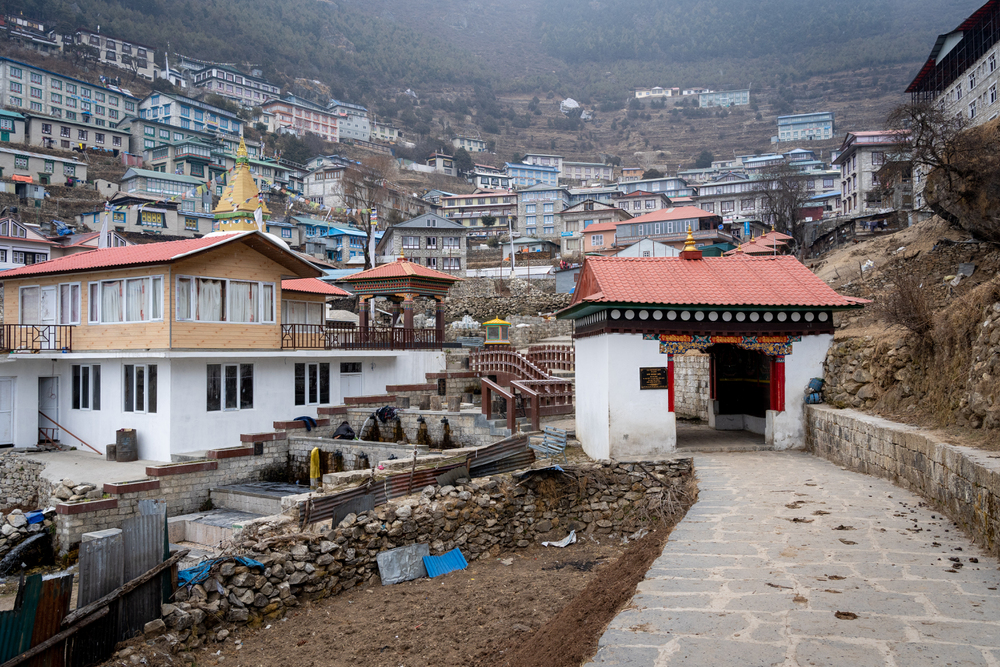
Known as the gateway to Everest, this bustling Sherpa town sits at 11,290 feet. It serves as the commercial heart of the Khumbu region where trekkers acclimatize before heading to higher altitudes. The village features traditional stone houses, colorful prayer flags, and a weekend market where locals sell a wide range of items, from yak cheese to climbing gear.
Namche’s strategic location in a natural amphitheater provides stunning views of Everest, Lhotse, and other towering peaks while offering modern amenities, including internet cafés, bakeries, and gear shops.
Tengboche
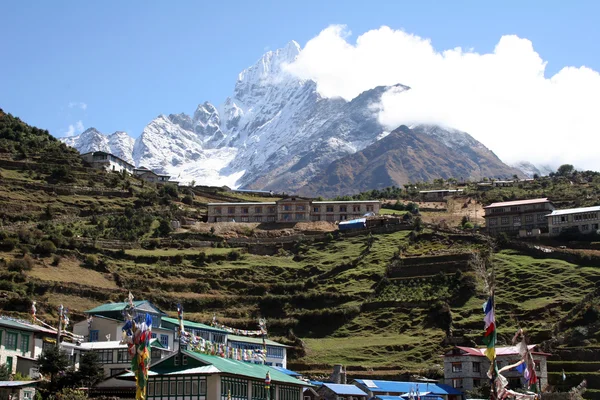
This sacred village at 12,664 feet houses one of the most important Buddhist monasteries in the Everest region, where monks conduct daily prayers against a backdrop of spectacular mountain vistas. The monastery hosts the renowned Mani Rimdu festival each autumn, drawing both locals and visitors to witness the masked dances and ceremonial celebrations that have been held for centuries.
The village provides unobstructed views of Everest, Ama Dablam, and surrounding peaks while serving as a spiritual center that demonstrates the deep connection between Sherpa culture and Buddhist traditions.
Dingboche
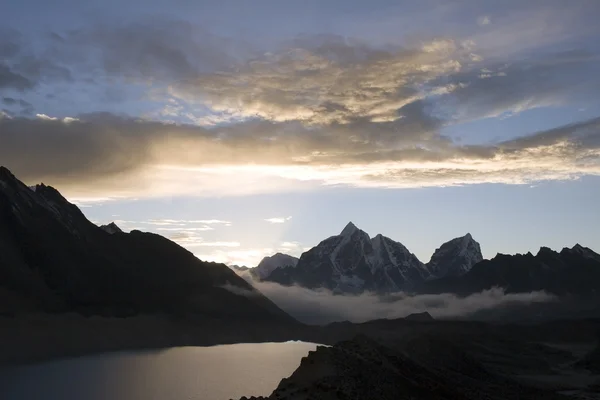
Positioned at 14,469 feet, this high-altitude village serves as a crucial acclimatization stop for Everest trekkers, showcasing traditional Sherpa agriculture adapted to the extreme mountain conditions. Stone-walled fields protect barley and potato crops from harsh winds, while traditional houses feature flat roofs designed to handle heavy snow loads during long mountain winters.
The village offers spectacular sunrise views of Lhotse and Island Peak while providing insight into how communities survive and thrive at altitudes where most visitors struggle with basic activities.
Lobuche
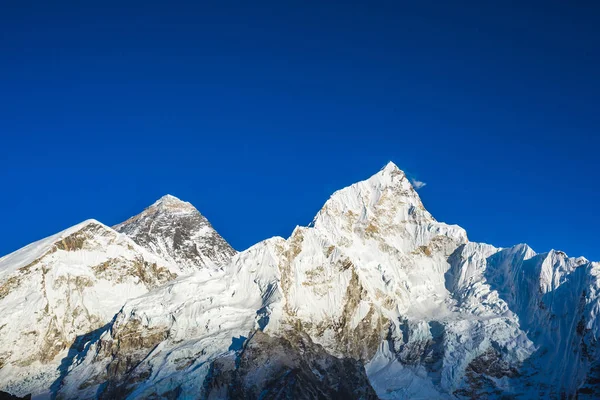
This small settlement, located at 16,210 feet, represents one of the highest permanently inhabited places on Earth, demonstrating remarkable human adaptation to extreme altitude and harsh weather conditions. The village serves primarily as a rest stop for Everest Base Camp trekkers.
Still, its existence highlights the incredible resilience of mountain people who have learned to live in environments where oxygen levels are half those at sea level. Simple teahouses provide shelter and hot meals while prayer flags flutter against a backdrop of towering ice-covered peaks.
Gorak Shep
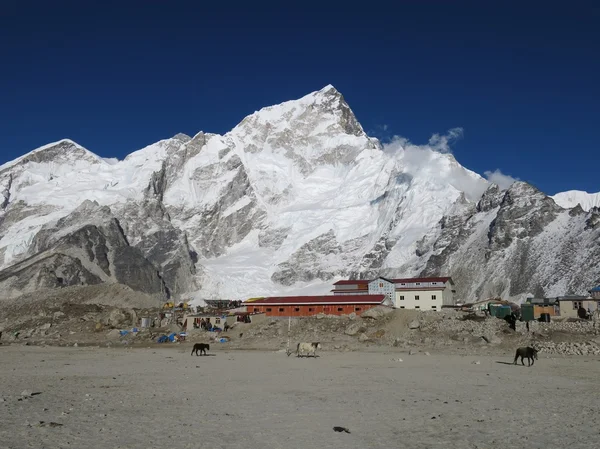
The highest settlement on the standard Everest Base Camp trek at 17,000 feet, this small village serves as the final overnight stop before reaching the base camp itself. The village’s location on an ancient lake bed creates a surreal landscape where simple lodges provide basic accommodation in one of Earth’s most extreme environments.
Views of the Khumbu Icefall and surrounding glaciers remind visitors of the incredible forces that shape these mountain landscapes while honoring the courage required to venture into such forbidding terrain.
Lukla
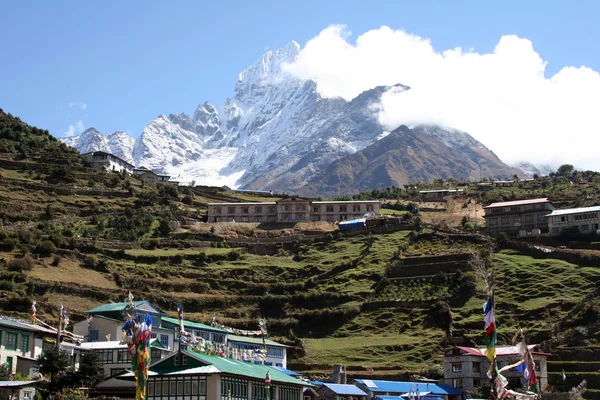
Famous for its dramatic airport perched on a mountain ledge, this village serves as the starting point for most Everest region treks while demonstrating how remote mountain communities connect with the outside world. The airstrip’s steep grade and short runway make landing here an adventure in itself, while the village buzzes with expedition preparations and the nervous energy of trekkers beginning their Himalayan journeys.
Local markets sell everything from fresh vegetables to mountaineering equipment, illustrating how traditional commerce adapts to meet the needs of modern adventure tourism.
Khumjung
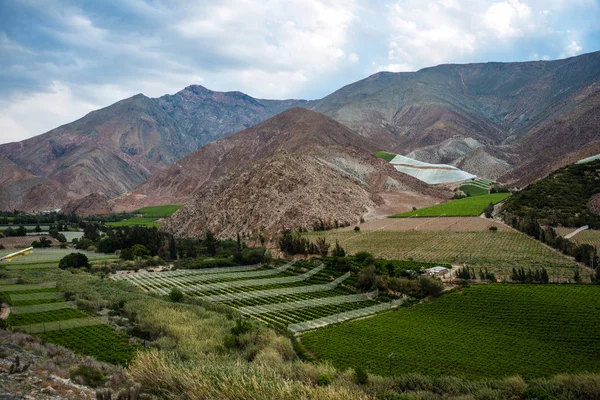
This traditional Sherpa village, located at 12,401 feet, preserves authentic mountain culture while serving as home to one of the region’s most important schools, founded with assistance from Edmund Hillary following his Everest success. The village features traditional architecture, ancient monasteries, and terraced fields that demonstrate sustainable farming practices developed over centuries of mountain living.
Local families maintain yak herds and practice traditional crafts while welcoming visitors who want to experience authentic Sherpa hospitality away from the main trekking routes.
Phakding
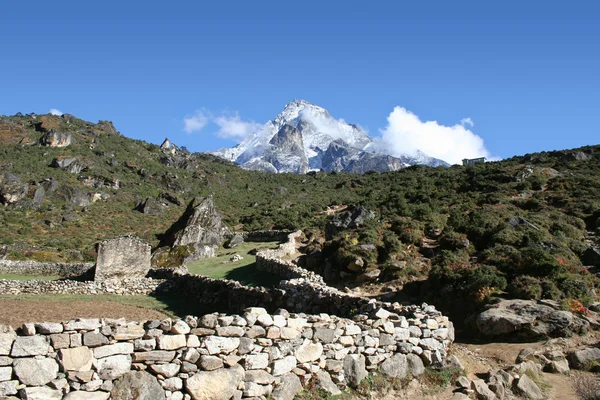
Located at 8,563 feet along the Dudh Kosi River, this village offers trekkers their first taste of Sherpa culture while serving as an acclimatization stop on the journey to higher altitudes. Traditional suspension bridges span rushing mountain rivers, while prayer wheels and Buddhist stupas remind visitors of the spiritual significance that permeates daily life in these mountains.
The village’s location in a deep valley creates dramatic scenery where terraced fields contrast with towering peaks rising thousands of feet overhead.
Thame
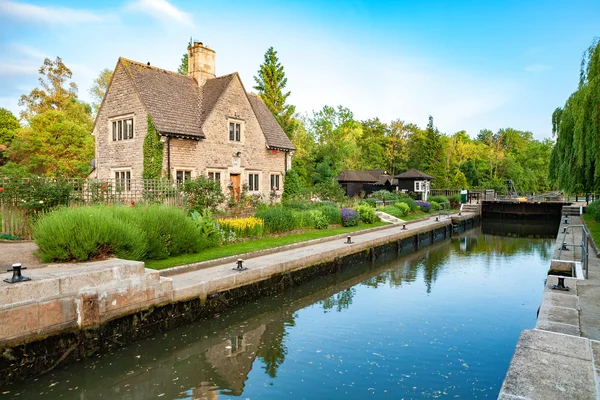
This historic Sherpa village sits off the main Everest trekking route, preserving traditional ways of life while serving as the birthplace of many famous Sherpa mountaineers, including Tenzing Norgay’s family. The village features an ancient monastery and traditional architecture that demonstrates how mountain communities have maintained their cultural identity despite increasing outside influence.
Alpine meadows surrounding the village provide grazing for yaks and offer spectacular views of peaks along the Tibet border.
Kunde
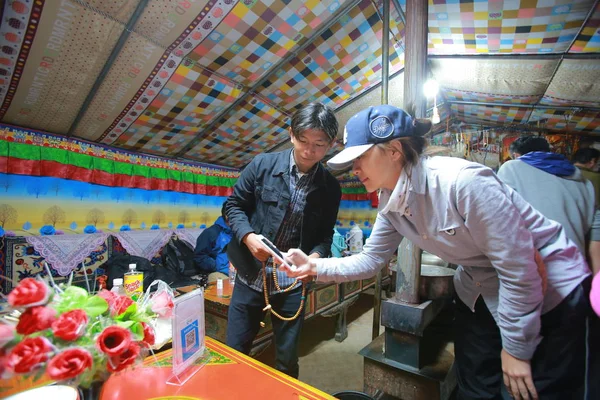
Adjacent to Khumjung, this village is home to an important hospital established by Edmund Hillary’s foundation, highlighting the ongoing connections between the climbing community and local Sherpa populations. The facility offers modern medical care in a region where traditional healing practices have sustained communities for generations, while the village retains its traditional architecture and farming practices.
The views of Ama Dablam and the surrounding peaks create a stunning backdrop for daily life at nearly 13,000 feet elevation.
Pangboche
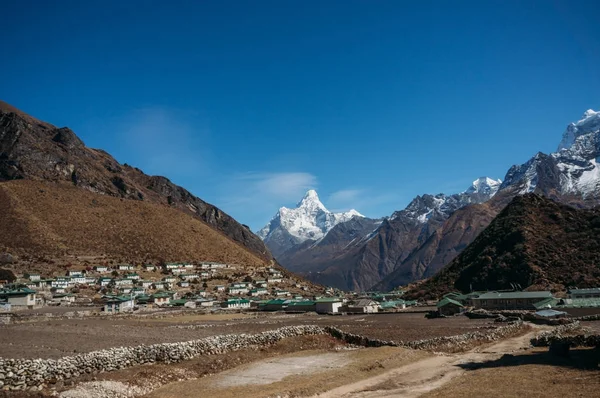
Home to one of the oldest monasteries in the Khumbu region, this village, situated at 13,074 feet, preserves important Buddhist artifacts while serving as a spiritual center for the surrounding community. The monastery is allegedly home to a yeti scalp and other mysterious relics, which contribute to the mystical atmosphere of these mountains.
At the same time, traditional ceremonies continue practices that have sustained mountain communities for centuries. The village’s location offers spectacular views of Everest and Ama Dablam, showcasing how spiritual beliefs help communities adapt to the challenges of extreme mountain living.
Syangboche
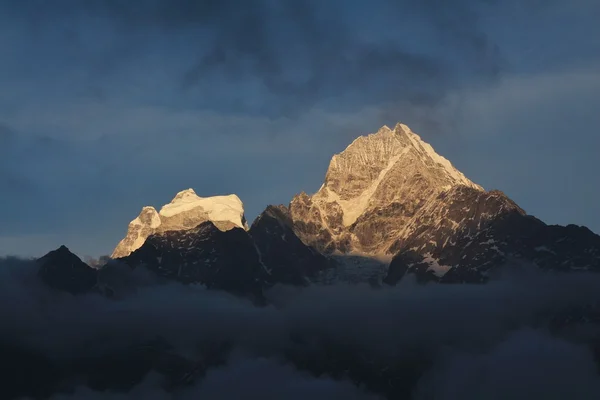
This small village near Namche Bazaar features one of the world’s highest airports, originally built to serve luxury hotel guests but now primarily used for emergency evacuations and cargo flights. The settlement showcases how modern infrastructure can adapt to extreme mountain conditions, while the surrounding area offers excellent acclimatization hikes with panoramic mountain views.
Traditional Sherpa houses contrast with modern facilities, illustrating how mountain communities strike a balance between preserving cultural traditions and adapting to changing economic opportunities.
Monjo
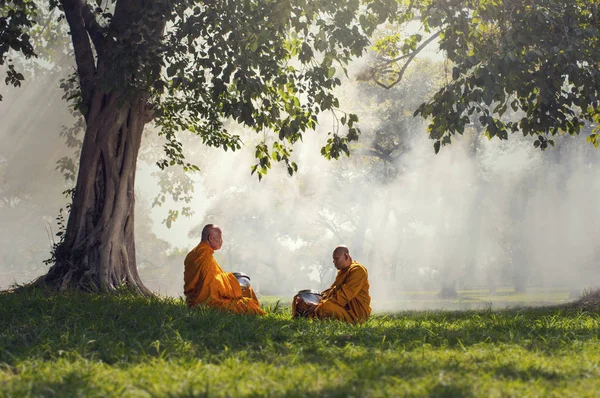
The gateway to Sagarmatha National Park, this village, situated at 9,301 feet, provides trekkers with their first introduction to protected mountain ecosystems while serving as a checkpoint for park permits and regulations. Traditional architecture and terraced farming demonstrate sustainable practices that have been developed over centuries, while the village’s location along the Dudh Kosi River creates a dramatic scenery with suspension bridges and rushing water.
Local families operate lodges and shops that cater to trekkers while maintaining traditional livelihoods, including farming and animal husbandry.
Gokyo

This high-altitude village, situated at 15,719 feet, is nestled beside a series of sacred lakes that create one of the most breathtaking landscapes in the Himalayas, offering an alternative route to Everest Base Camp with fewer crowds. The settlement provides basic accommodations for trekkers climbing Gokyo Ri for panoramic views of four peaks over 26,000 feet. At the same time, the surrounding area demonstrates how glacial processes continue to shape these mountain landscapes. Traditional stone houses blend seamlessly with the stark beauty of high-altitude terrain, where only the hardiest vegetation can survive.
Chukhung
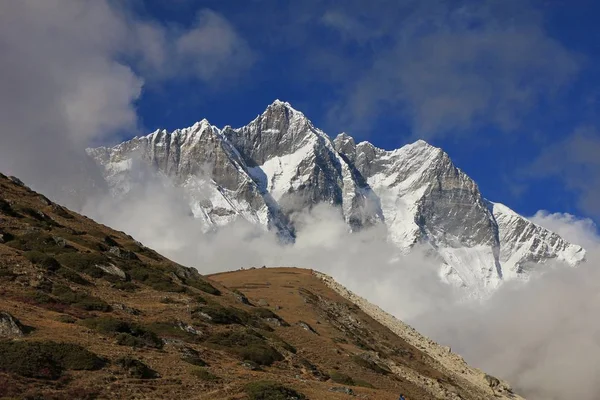
This seasonal village at 15,518 feet serves as base camp for climbs of Island Peak and other technical mountains, demonstrating how temporary settlements support mountaineering activities in extreme environments. Simple lodges operate only during climbing seasons, while the surrounding area offers spectacular views of the south face of Lhotse and other major peaks.
The village’s existence demonstrates how mountain communities adjust their activities to seasonal patterns while catering to the needs of international climbing expeditions.
Machermo
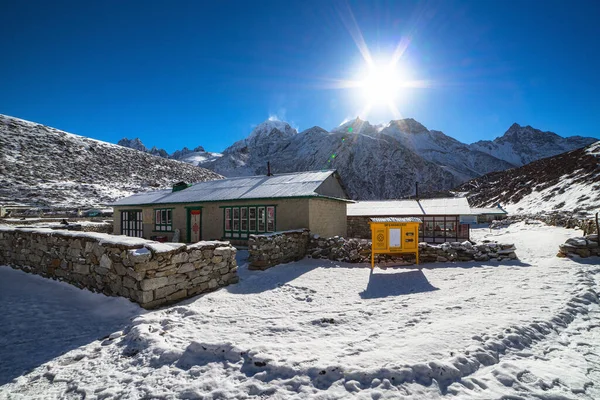
Located at 14,470 feet along the Gokyo valley route, this small village provides accommodation and services for trekkers while demonstrating life at extreme altitude, where every activity requires careful planning and energy conservation. Traditional stone houses offer protection from harsh weather while the surrounding landscape showcases glacial moraines and high-altitude vegetation that survives in one of Earth’s most challenging environments.
The village serves as an important acclimatization stop while offering views of peaks that tower thousands of feet overhead.
Pheriche
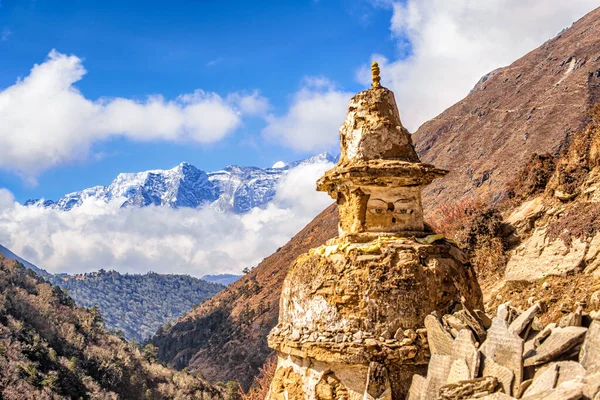
This high-altitude village, situated at 14,340 feet, houses an important medical clinic that serves trekkers and climbers throughout the region, demonstrating how modern healthcare adapts to serve remote mountain communities. The Himalayan Rescue Association facility provides treatment for altitude-related illnesses while conducting important research on high-altitude medicine and human adaptation to extreme environments.
Traditional yak herding continues around the village while international visitors receive life-saving medical care in one of the world’s most remote locations.
Thukla
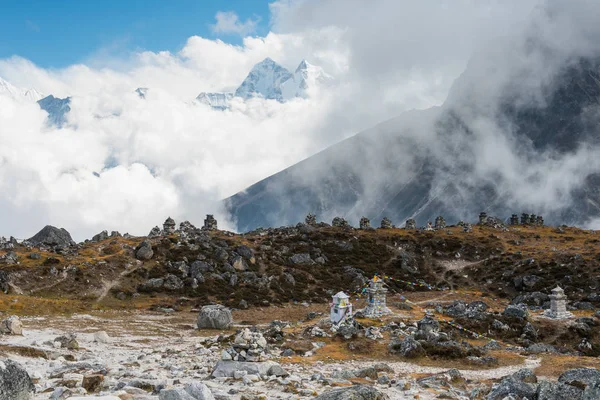
Also known as Dughla, this small settlement at 15,059 feet serves as a memorial site where stone cairns honor climbers and Sherpas who have died in the mountains, creating a solemn reminder of the risks inherent in high-altitude mountaineering. The village provides basic accommodation while the surrounding area offers views of memorials dedicated to some of mountaineering’s most famous figures.
Prayer flags flutter among the memorial stones, illustrating how Buddhist traditions help communities cope with loss and honor those who have given their lives to the mountains.
Dzongla
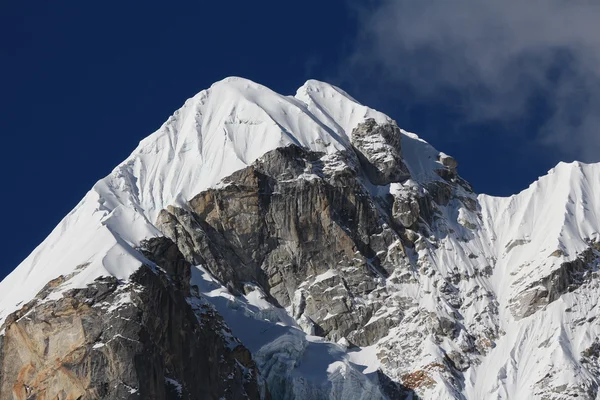
This tiny settlement, located at 15,939 feet, serves climbers attempting to summit Cho Oyu and other major peaks, demonstrating how temporary villages support expeditions to some of the world’s most challenging mountains. Basic teahouses provide shelter and hot meals in an environment where survival depends on careful preparation and respect for rapidly changing weather conditions.
The village’s location offers spectacular views of the Cho Oyu massif, serving as a poignant reminder of human determination to explore and climb in the most forbidding environments on Earth.
Chhukhung Ri Base
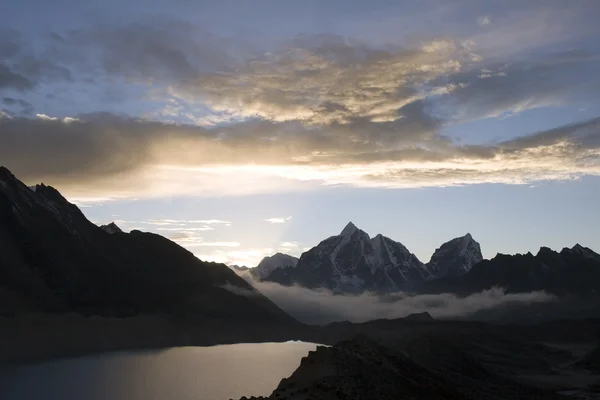
This high camp location, situated at 16,400 feet, represents the upper limit of seasonal human habitation, where expedition teams establish temporary shelters before attempting technical climbs of the surrounding peaks. The site demonstrates extreme adaptation to altitude, weather, and isolation while serving as a launching point for some of the most challenging mountaineering objectives in the Himalayas.
Simple stone shelters provide minimal protection while the surrounding landscape showcases the raw power and beauty of high-altitude mountain environments.
Living Legends of the High Peaks

These Himalayan villages preserve ancient ways of life while adapting to serve modern mountaineering and trekking activities that bring the outside world to some of Earth’s most remote locations. Each settlement tells stories of human resilience, cultural preservation, and the ongoing relationship between mountain peoples and the international climbing community that depends on their knowledge and support.
The villages demonstrate how traditional knowledge about weather, terrain, and survival remains essential for safe travel in these extreme environments. At the same time, modern amenities and medical facilities reflect the global nature of contemporary mountaineering. Mount Everest Day celebrates not just the achievement of reaching the world’s highest summit, but the entire network of communities, cultures, and traditions that make such achievements possible. These villages remind us that behind every successful mountain expedition stand generations of mountain peoples who have learned to thrive in environments that challenge the very limits of human survival.
More from Travel Pug

- 20 Best Beach Towns in the Carolinas
- 13 Destinations Where Tourists Regularly Regret Their Trip
- 20 Destinations That Are More Magical Without an Itinerary
- 20 Underrated Adventures That Belong on Your Travel List
- 20 Cities Where You Should Just Wing It, No Planning Required
Like Travel Pug’s content? Follow us on MSN.
